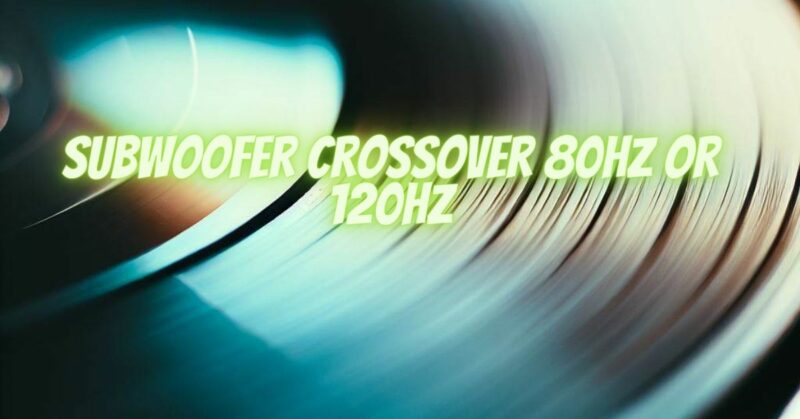When setting up a home audio system or a car audio setup, one crucial decision you’ll face is selecting the crossover frequency for your subwoofer. The crossover frequency determines which frequencies are sent to your subwoofer and which are directed to your main speakers. Among common crossover points, 80Hz and 120Hz are frequently used. In this article, we’ll explore the differences between these two crossover frequencies and help you decide which one is right for your audio system.
Understanding Crossover Frequency
Crossover frequency is the point at which audio signals are divided between different speakers in a multi-speaker audio system. In the context of a subwoofer, it defines the frequency at which low-frequency sounds are redirected to the subwoofer, allowing it to handle the bass while the main speakers handle mid and high frequencies.
Common Crossover Frequencies:
- 80Hz: Often considered the industry standard, 80Hz is a widely accepted crossover frequency that strikes a balance between subwoofer and main speaker integration. It allows the subwoofer to handle frequencies below 80Hz, while the main speakers take care of higher frequencies.
- 120Hz: A higher crossover frequency at 120Hz directs more mid-bass frequencies to the subwoofer. This can be useful for enhancing the subwoofer’s contribution to the overall sound and can be suitable for specific audio setups.
Choosing Between 80Hz and 120Hz
The choice between an 80Hz and 120Hz crossover frequency depends on several factors:
- Speaker Capabilities: Consider the capabilities of your main speakers and subwoofer. If your main speakers can comfortably handle frequencies down to 80Hz or lower, an 80Hz crossover may be suitable. If your main speakers are smaller or less capable in the lower frequency range, a 120Hz crossover can help fill in the mid-bass gap.
- Room Acoustics: Room acoustics play a significant role in bass response. In larger rooms with more significant acoustic challenges, a 120Hz crossover might be beneficial to reinforce mid-bass frequencies. In smaller rooms with controlled acoustics, an 80Hz crossover can suffice.
- Listening Preferences: Your personal preferences also matter. If you enjoy a fuller, more pronounced bass presence, a 120Hz crossover can provide a more substantial mid-bass impact. However, if you prefer a more seamless blend between the subwoofer and main speakers, an 80Hz crossover may be a better choice.
- Audio Content: Consider the type of audio content you primarily listen to. If you frequently enjoy music or movies with substantial mid-bass content, a 120Hz crossover might enhance your listening experience. For a broader range of content, an 80Hz crossover is versatile.
- Subwoofer Quality: The quality and capabilities of your subwoofer matter. A high-quality subwoofer can handle lower frequencies with precision, making an 80Hz crossover more effective.
- Experimentation: Don’t be afraid to experiment with different crossover frequencies. Most AV receivers and car audio systems allow you to adjust the crossover settings. You can audition both crossover frequencies and decide which one sounds best to your ears.
In the end, the choice between an 80Hz and 120Hz crossover frequency depends on your specific audio system, listening preferences, and room conditions. Both frequencies have their merits, and the decision should aim to achieve the best integration between your subwoofer and main speakers. Experimentation and careful tuning can help you find the perfect crossover frequency that delivers the deep, rich bass you desire while maintaining a balanced and enjoyable listening experience.


